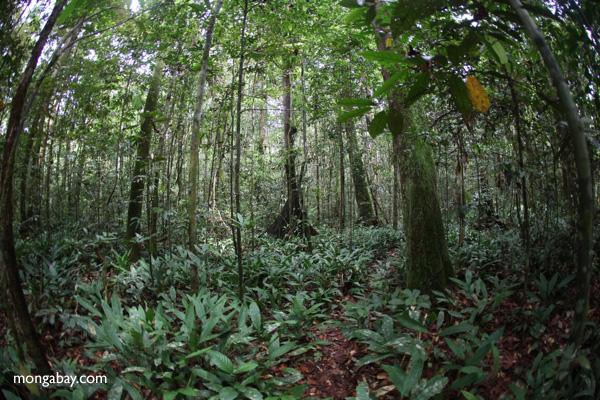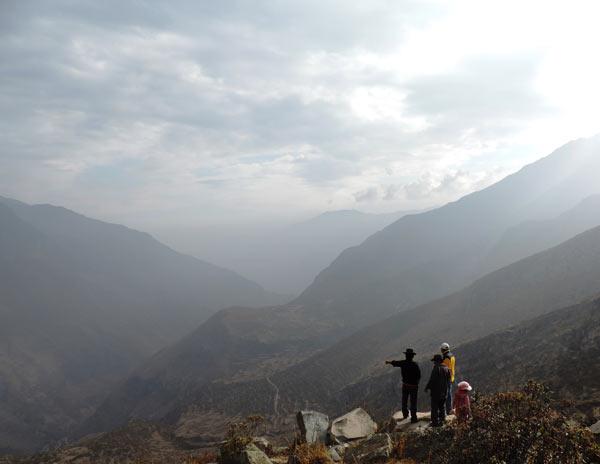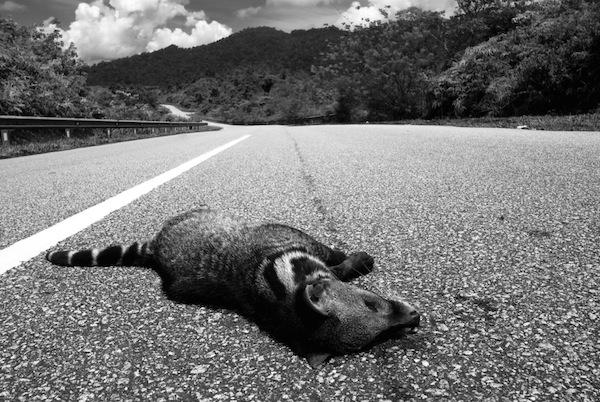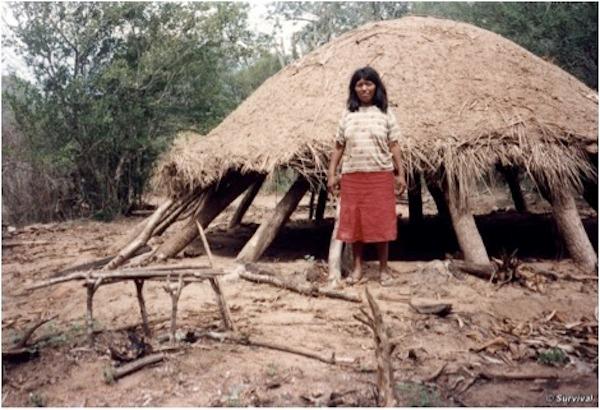Can the act of planting a tree change one’s attitude towards forests and conservation? Erica Pohnan, Hotlin Ompusunggu, and Campbell Webb, from the conservation NGO Alam Sehat Lestari (ASRI), set out to answer this question by evaluating the effectiveness of reforestation programs in and around Gunung Palung National Park in West Kalimantan, Indonesia. Their results were recently published in mongabay.com’s open access journal Tropical Conservation Science.
The main objective of the study was to assess how community participation in reforestation projects has affected local attitudes toward illegal logging activity. Indonesia’s protected areas and national parks are increasingly threatened by illegal logging, which coincides with a declining national forestry sector. The study focused on Kalimantan’s Gunung Palung National Park, which has has suffered dramatic forest loss over the past several decades. The park consists of 348 square miles (900 square kilometers) of protected forest and is home to a population of 2,500 orangutans as well as many endangered species such as gibbons, clouded leopards, and eight hornbill species. According to previous research, an estimated 12,400 hectares – 13 percent – of designated park forested area was lost to illegal logging between 1992 and 2004. Global Forest Watch data shows the park lost a further 7,000 hectares of tree cover from 2004 through 2012.
The authors write that illegal logging activity in the surrounding regions of the Gunung Palung National Park can be largely traced back to the withdrawal of timber concessionaires from the 1990s and the introduction of “community-based logging.” At the time, an estimated 80 percent of households in the region earned a majority of their cash income from logging.
In 2009, the local conservation community development NGO ASRI started a reforestation program within the Gunung Palung National Park. The project aimed to collect data on reforestation of tropical forest areas while also providing jobs to locals in hopes of reducing dependence on illegal logging. Since the project initiation, the authors write that there haven’t been any conflicts in the community over the future use of trees. Additionally, they report widespread local support among the community for the reforestation program.
Recent surveys conducted by ASRI in villages around the national park showed a decrease in the percentage of households involved in illegal logging activity, from 33 percent in 2008 to 10 percent by 2012. Furthermore, the survey revealed that all participating households expressed a desire for alternative forms of work, suggesting that a change in livelihoods could help stem illegal logging around Gunung Palung.
Due to the success of the initial reforestation program, ASRI has begun looking into the relationship between local participation in the reforestation program and illegal logging activity. ASRI hypothesized two possible pathways that local involvement with reforestation projects could influence a reduction in illegal logging: perception change and economic improvement.
“Perception change” encompasses a societal shift in the attitude towards illegal logging and an acknowledged value of forest resources. Economic improvement includes providing the community with an alternative source of income to logging as well as supporting improvement in the overall economic well-being of the community by encouraging new skills.
In February 2013, ASRI conducted a survey to assess the social impact of the reforestation program on local communities and to test their hypothesis that participation in reforestation programs reduces illegal logging activity.
ASRI conducted interview surveys with 50 residents, of whom 75 percent had been involved with the reforestation project and 25 percent had no prior involvement with the program. The ASRI reforestation program is located in a village with 764 households in which one hundred villagers were employed by the reforestation program between 2009 and 2013 as nursery staff, seasonal reforestation workers, day laborers and fire protection crews.
In addition to structured survey questions, the participants were invited to share their personal experiences with the reforestation program and attitudes towards the national park. The survey respondents were also asked to describe their livelihoods before and after their participation with the reforestation program.
The survey results revealed that 80 percent of participants believed the reforestation program helped reduce illegal logging activity in the park. However, the researchers did not find strong enough evidence to show a direct relationship between the survey results and their two hypothesized pathways of “perception change” and “economic improvement.” The authors suggest that a follow-up survey involving detailed ethnography would be beneficial to capturing a more holistic view of the relationships between the community, the reforestation program and forest crimes.
On the other hand, the authors found that narrative stories provided by locals during the survey process indicated that employment, timber availability and fear of legal retribution are the most influential factors to the reduction of illegal logging. In addition, the survey results showed that respondents who had participated in the reforestation program possessed a greater knowledge of the national park as well as an appreciation and desire to preserve the forest for future generations. Thus, if increased awareness is considered to be a type of “perception change,” then the reforestation program did indeed influence the attitude of many locals.
The authors write that their survey results also revealed that the reforestation program sparked a new “empowerment pathway.” Through this pathway, locals were able to improve their economic livelihoods and gained more personal confidence through the skills and experiences they acquired with the reforestation program. Many participants have initiated their own tree-planting activities using the skills and techniques they learned since their involvement with the reforestation program. Additionally, the authors suggest this new sense of empowerment may provide the momentum to change local perceptions of forests and reduce the social acceptability of illegal logging.
Moreover, the study points out that the social acceptability of illegal logging has already declined in the region. The authors attribute this shift to an increase of patrolling activity by park staff as well as the introduction of oil palm plantations, which has been a source of both employment and raw timber. Furthermore, the survey has provided a detailed view of the local socio-economic drivers behind illegal logging and thus provides an entry point for addressing forest crime. The authors suggest future development in the area surrounding Gunung Palung National Park should focus on providing long-term economic opportunities to prevent illegal logging activity from returning.
Citations:
- Hansen, M. C., P. V. Potapov, R. Moore, M. Hancher, S. A. Turubanova, A. Tyukavina, D. Thau, S. V. Stehman, S. J. Goetz, T. R. Loveland, A. Kommareddy, A. Egorov, L. Chini, C. O. Justice, and J. R. G. Townshend. 2013. “Hansen/UMD/Google/USGS/NASA Tree Cover Loss and Gain Area.” University of Maryland, Google, USGS, and NASA. Accessed through Global Forest Watch on March 24, 2015. www.globalforestwatch.org.
- Margono, B. Primary forest cover loss in Indonesia over 2000–2012. Nature Climate Change,doi:10.1038/nclimate2277. Retrieved June 30, 2014, from Nature
- “Oil Palm.” World Resources Institute. Accessed through Global Forest Watch on March 24, 2015. www.globalforestwatch.org.
- Pohnan, E. Ompusunggu, H. and Webb, C. 2015. Does tree planting change minds? Assessing the use of community participation in reforestation to address illegal logging in West Kalimantan. Tropical Conservation Science Vol.8 (1): 45-57. Available online: www.tropicalconservationscience.org
- UNEP-WCMC, UNEP, and IUCN. “World Database on Protected Areas.” Accessed on March 24, 2015. www.protectedplanet.net.
- Zamzani, F., Onda, N., Yoshino, K., & Masuda, M. (2009). Deforestation and Agricultural Expansion Processes in Gunung Palung National Park, West Kalimantan, Indonesia. JURNAL MANAJEMEN HUTAN TROPIKA, 15(1).
This article was written by Ariel Mark, a contributing writer for news.mongabay.com. This article has been republished with permission, original article here.



